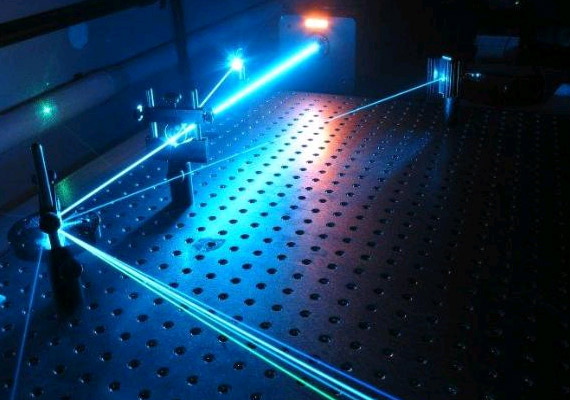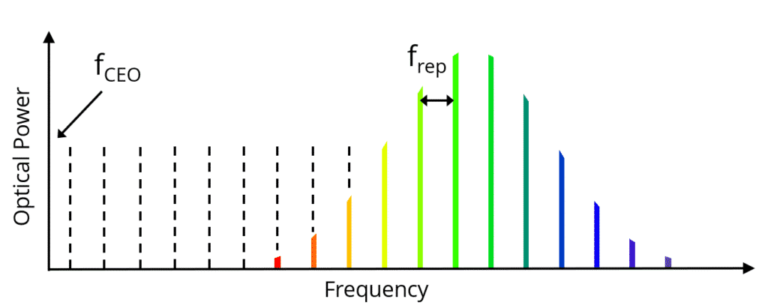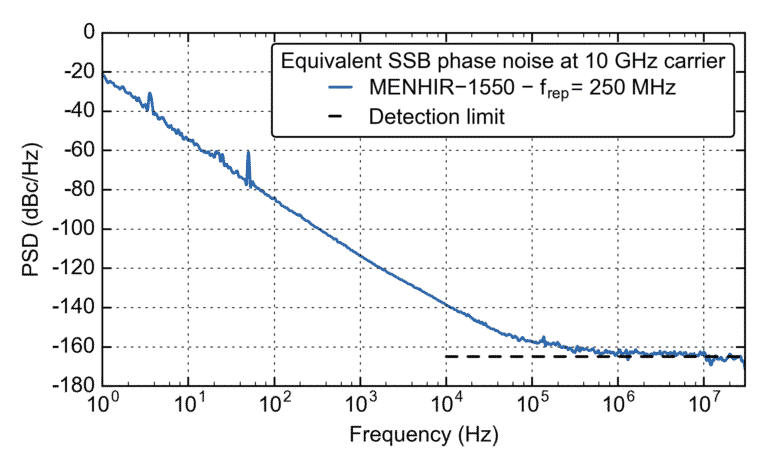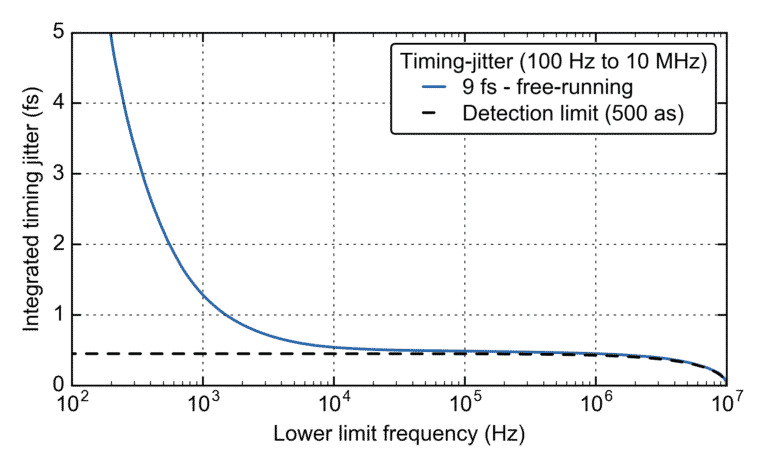Frequency Combs
November 22, 2019 2023-01-09 13:18Frequency Combs
Frequency Combs optical
An optical frequency comb can be regarded as a ruler for frequencies. If the comb frequencies are known other frequencies can be measured by measuring beat notes. The frequency of these beat notes is then the difference in frequency of the unknown frequency and the comb frequencies. For measurements within a wide frequency range (long optical ruler) the frequency comb needs a large bandwidth.


Femtosecond modelocked lasers are very suitable sources for generating very broadband frequency combs. The optical spectrum of a modelocked laser consists of discrete lines with a spacing equal to the pulse repetition frequency (frep). This is already a frequency comb with a bandwidth of several nanometres to several tens of nanometres. Using strong optical nonlinearities outside the laser cavity, for example from highly nonlinear optical fibers (HNLF) the comb can be further broadened. These techniques can lead to so-called octave-spanning spectra, optical spectra for which the highest frequency is at least twice the lowest frequency.
If the pulse train would be perfectly periodic – also with respect to the electric field and not only the pulse envelope – all the comb lines would simply be harmonics of the pulse repetition frequency. In reality the oscillations of the electric field are constantly shifted with respect to the pulse envelope. The rate at which the peak of the carrier slips from the peak of the field envelope on a pulse-to-pulse basis is called carrier-envelope offset (CEO). In the frequency-domain the carrier-envelope offset frequency (fCEO) is the offset of the frequency comb from the “zero-point” in the optical spectrum. If the two parameters frep and fCEO are known, all frequencies of the comb are known.

Self-referenced optical frequency comb
An optical frequency comb (OFC) is a photonic tool similar to a gear in mechanics. It connects the optical frequency domain (THz) to the well-known microwave domain (MHz – GHz). This guarantees a “one to one” correspondence between frequencies that differ by more than five decades, and enables ultra-high optical frequencies to be directly resolved with standard electronics.
This Nobel-prize awarded technique has many direct applications in various fields, both industrial and scientific. To name a few: frequency comb spectroscopy, precision frequency transfer, distance measurement or low-noise signal generation.
Whitepaper
To find out more about the optical synchronization of Menhir Photonics's lasers download the Whitepaper.
Menhir Photonics added values
The MENHIR-1550 is the only industrial-grade femtosecond lasers centred at 1550 nm with pulse repetition rates in between 250 MHz and 2.5 GHz. For many applications requiring large comb-spacing this repetition frequency range is ideal. The optical spectrum centred in the telecom C-band is ideal for telecom applications, or other applications benefiting from reliable and cost-effective telecom components.
Menhir Photonics offers modelocked lasers with the lowest phase-noise available on the market today. Fig. 1 shows a typical phase noise measurement for a free-running laser of the MENHIR-1550 series, measured on the 10 GHz carrier (the 40th harmonics of the 250 MHz pulse repetition rate). Note that the noise floor of the measurement limits the integrated timing jitter to approximately 500 as (attoseconds).

Phase noise power spectrum of a free-running MENHIR-1550 250MHz laser measured at the 10 GHz harmonics.

Integrated timing jitter starting at 10 MHz for the same free-running laser.
All lasers of the MENHIR-1550 SERIES have an optional fast repetition rate tuning with a modulation bandwidth of >50 kHz for repetition rate locking or synchronization. In addition, there is also the option for fast modulation of the pump current.
The MENHIR-1550 SERIES reaches unmatched levels of industrial quality and environmental stability. It has been excessively tested for vibrations, shocks and other external disturbances (space and aerospace related standard tests). For integration into space-critical applications, customized small-sized versions are available.
